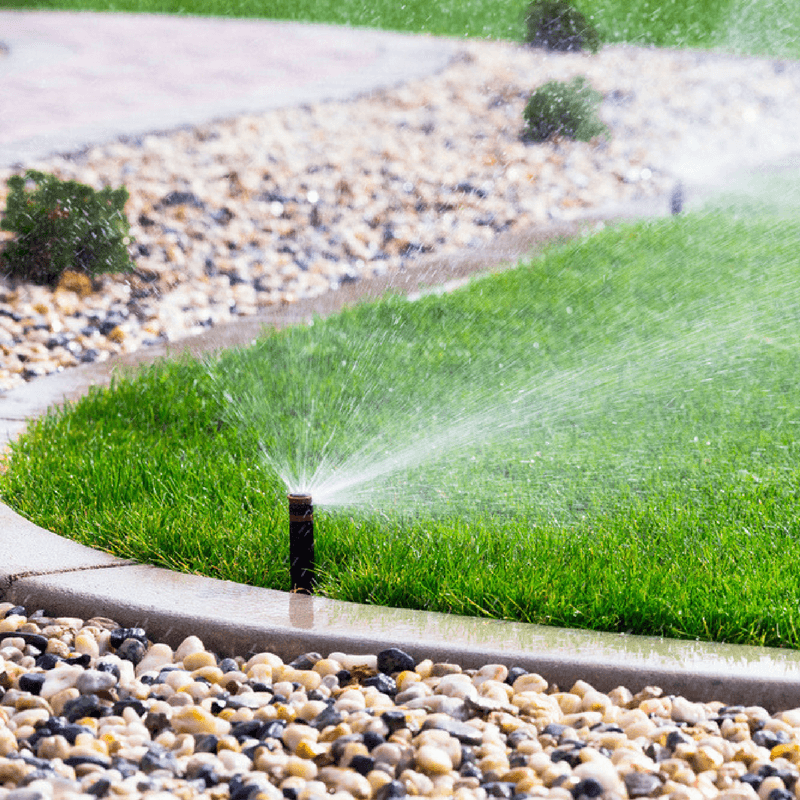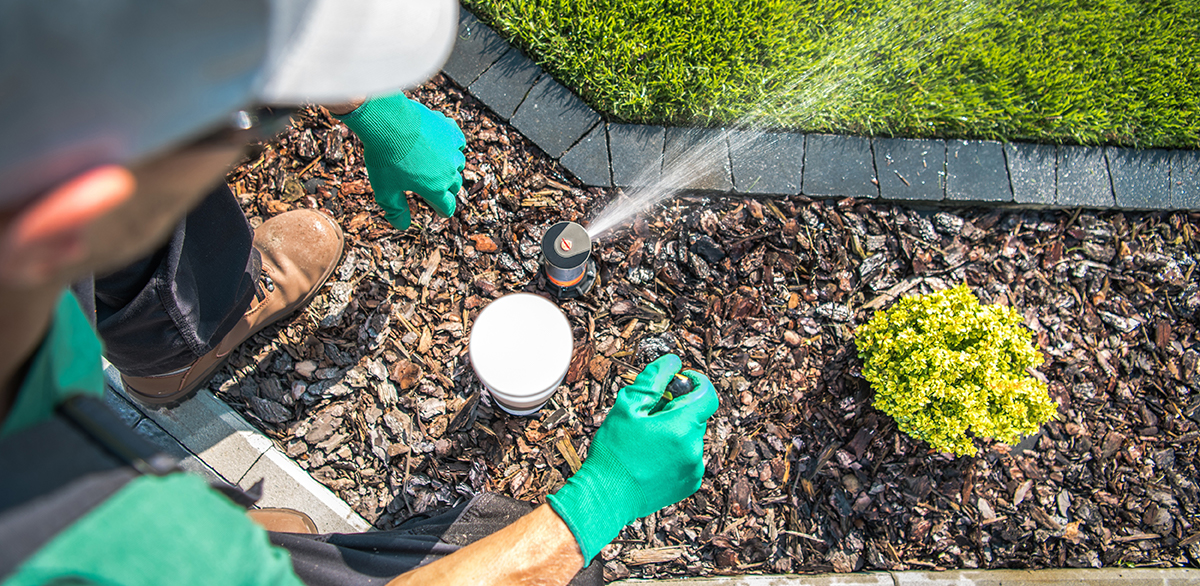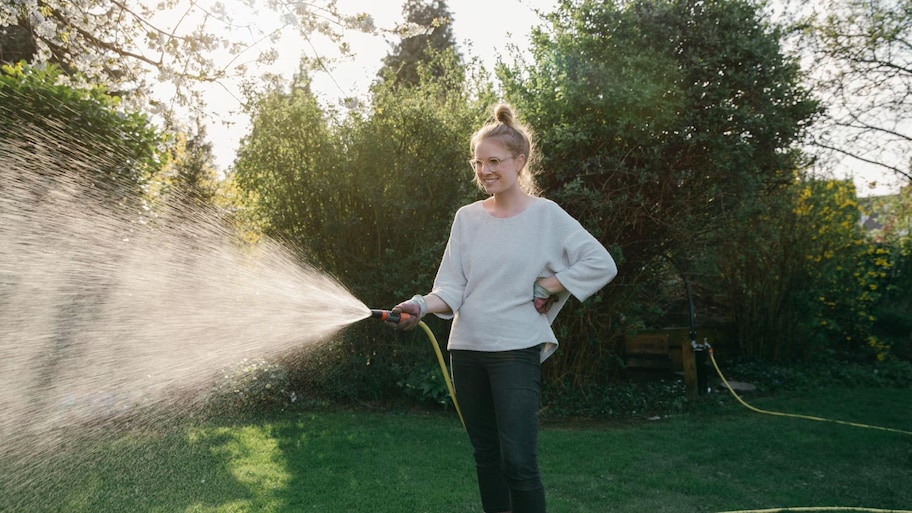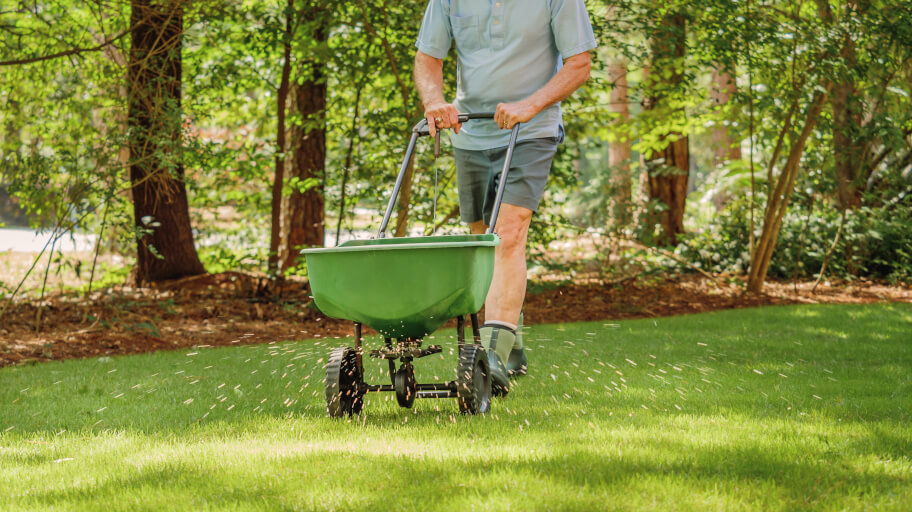Most people understand that watering their lawn is essential for its health. However, few gardeners and landscapers have a comprehensive understanding of the intricacies of proper lawn irrigation. This article aims to provide a deeper understanding of the subject.
We will provide you with valuable information and tips to help you understand proper lawn irrigation and enhance the health of your lawn. We will start by discussing the best time to water your lawn.
What is the ideal timing for watering your lawn?
Watering your lawn is crucial for maintaining its health and lush green appearance. However, it’s not just about applying water to your lawn, but also about the right time to do it. The optimal time to water your lawn is in the morning, between 4 am and 10 am, when the air is cooler, and water is more likely to penetrate deeply and hydrate the grass.
Avoid watering your lawn during the middle of the day as the warmer temperatures will cause the water to evaporate quickly, minimizing its penetration into the soil. Similarly, watering your lawn in the evening is not recommended, as it increases the chances of fungal growth on the grass. Water clinging to the blades of the grass throughout the night can cause lawn diseases.
If you can’t water your lawn during the week, wait until the weekend mornings to do it, instead of watering it in the evenings after work. It’s also helpful to set up sprinklers on a timer, as this alleviates the burden of waking up early to water the lawn. By following these guidelines, you can ensure that your lawn remains healthy and free from diseases.

Understanding Lawn Watering: How Much and How Often?
When it comes to watering your lawn, two factors come into play: the amount of water and the frequency of watering. While the latter may seem crucial, the former is more important in ensuring the health and growth of your lawn.
Typically, a lawn requires a minimum of one to one and a half inches of water every week, all year round. However, during hotter months or in areas with higher temperatures, more frequent watering may be necessary due to increased evaporation. Failure to provide adequate hydration during such times can lead to stunted or dying grass.
It’s better to water your lawn deeply two to three times a week than to water it insufficiently every day. Additionally, overwatering can be just as harmful as not watering enough. Too much water can cause shallow roots and create an environment for fungal growth. So, be cautious and mindful of your watering habits for the best results.
The rate of water penetration
Different soil types have varying water requirements, so it’s crucial to identify the type of soil in your lawn. Typically, soil is a combination of sand and clay, known as loam, which doesn’t retain water effectively. Clay, on the other hand, holds moisture much better, but water penetration is slow. You can determine your soil type by examining its texture. Clay will form a ball that doesn’t crumble when squeezed, whereas sand will briefly hold together when compressed.
To check whether your lawn is sufficiently hydrated, use a screwdriver. If you can’t push a 6-inch screwdriver into the soil, your lawn may need more watering. When watering, ensure that the water penetrates the soil up to 6 inches. Here’s what you can do:
- Choose a day when you have enough time to water your lawn.
- After watering your lawn for 15 minutes, use a screwdriver or shovel to check how deep the water has penetrated the soil.
- Record the amount of time it takes for the water to reach 6 inches deep to determine how long your lawn needs to be watered regularly.
- Adjust the timing on your sprinklers if you’re using timed irrigation.

Irrigation
Let’s delve into the topic of irrigation, which encompasses four main types in modern-day agriculture:
- Sprinkler Irrigation: This method, also known as overhead irrigation, involves distributing water through the air in a manner similar to rain. Sprinkling devices can be temporarily or permanently fixed in place, or they can be mobile via pipelines that traverse the land surface.
- Drip/Trickle Irrigation: This technique of micro-irrigation delivers water to the soil surface through emitters in the form of droplets or small streams. The low water distribution rate of these emitters allows them to be used on most soil types, with less pressure and flow than traditional sprinkler systems.
- Surface Irrigation: This approach is commonly used on large plots of land and involves a variety of techniques in which water is dispensed over the soil surface through gravity flow. It is best suited for vast acres of land with chunky grass spans. Border irrigation and furrow irrigation are two examples of surface irrigation methods.
- Sub-surface Irrigation: In these systems, water is applied beneath the soil surface. The specific technique used depends on the depth of the water table. Here is a visual representation of sub-surface irrigation.Other Effective Tips for Watering the Lawn
Other Effective Tips for Watering the Lawn
Here are some helpful tips to keep in mind when watering your lawn, whether you choose to use a hosepipe or sprinklers:
- Ground-built sprinklers are the most efficient option for lawn watering, making them worth the investment if you plan on living in your home for a long time.
- If you don’t want to invest in an underground irrigation system, a pulsating, revolving sprinkler connected to a garden hose is the next best option. This type of sprinkler releases water horizontally at high speed, reducing evaporation and wind interference. It’s best for an established lawn.
- However, for new lawns, pulsating sprinklers can be too powerful and wash away the seeds. Oscillating sprinklers are a better option, releasing water more gently to avoid any harsh impact on the seeds.
- Lawns in new housing developments where the topsoil was removed can have tough soil that’s hard for water to penetrate. In this case, watering in 30-minute phases with intervals in between can help soften the ground for better water absorption.

Frequently Asked Questions
Rewritten:
- What is the recommended watering time for each zone? The exact time depends on the soil type and climate of your area, but as a general guideline, we suggest watering each zone for around 15 minutes. This allows enough time for the water to penetrate 6 inches into the soil. If using a sprinkler system, set it to one zone using the timer for 15 minutes before moving to the next zone.
- How long does it take a sprinkler to water 1 inch? It typically takes around 30 minutes, but it’s best to test this on your lawn by timing the sprinkler to get an estimate specific to your lawn’s soil type and climate.
- How often should a newly seeded lawn be watered? For the first few weeks, water the lawn lightly twice a day, for about 10 minutes each time. This ensures that the top layer of soil stays moist. Once the grass starts growing, you can water it deeper and less often, encouraging the roots to penetrate deeper into the soil.
- Can you water your lawn during a drought? It’s recommended to follow the instructions provided by local authorities during a drought and avoid normal watering schedules.
- What is basin irrigation? Basin irrigation is an ancient method of irrigation that involves flooding land for a short period of time. This method was used in the past to cultivate crops in areas that could withstand large amounts of water.
After delving into the fundamental principles and finer details of lawn watering and irrigation, it is safe to say that you now possess a thorough comprehension of the best techniques and measures to optimize your lawn’s health. Understanding the appropriate times, methods, and frequency of lawn watering is crucial knowledge for gardeners, homeowners, and landscapers alike. We would love to hear your feedback on this article and encourage you to share it with others if you found it informative and helpful.
